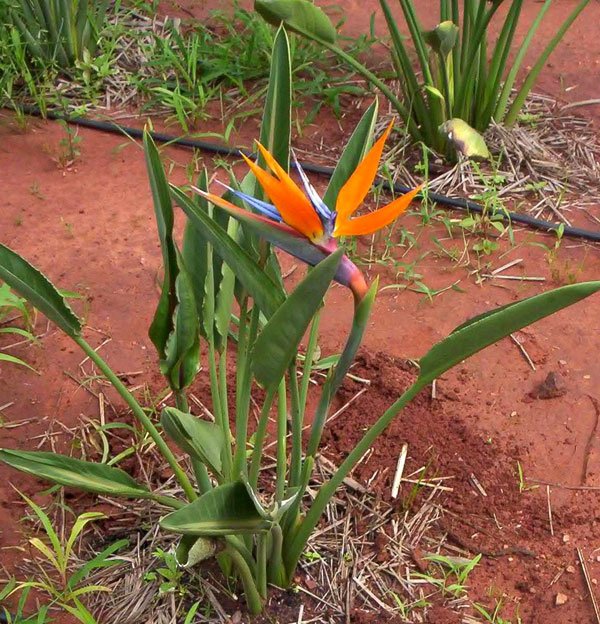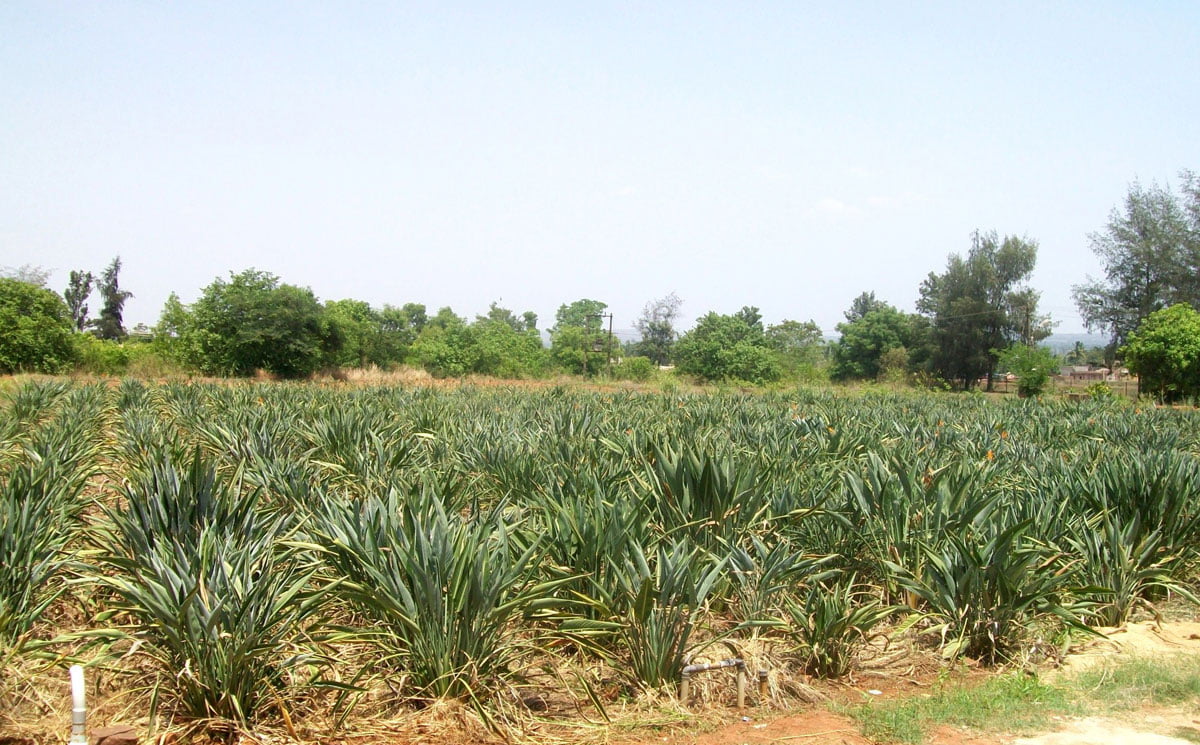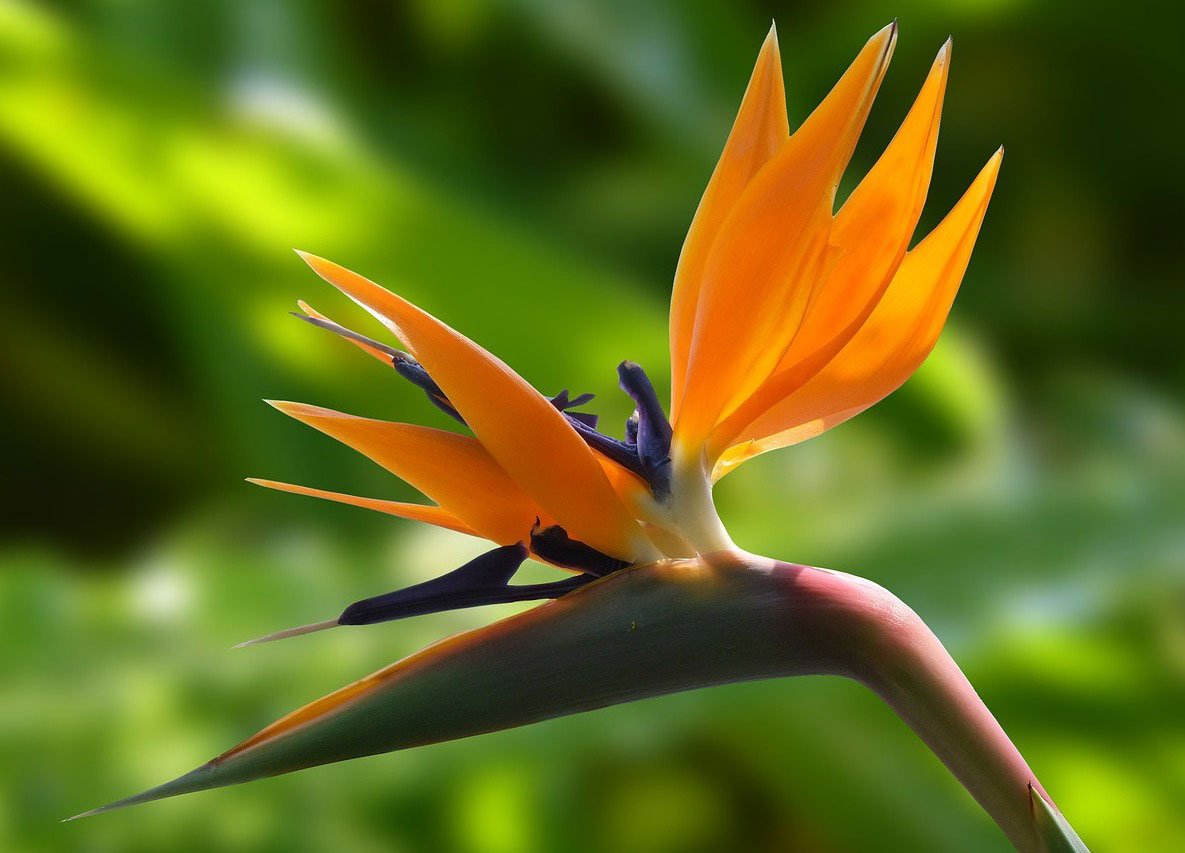Bird of paradise (Strelitzia reginae Ait.) is an evergreen perennial herbaceous plant and grown in the regions having a moderate subtropical climate. The brilliant colours and unusual appearance of the flowers have made it exceptionally popular as a cut flower.
Therefore, the Bird of paradise cultivated in many parts of the world to produce cut flowers for both domestic and international markets. The major producing countries of a bird of paradise on a commercial scale are America, Israel, and South Africa In temperate areas like Netherlands, Poland, China, Japan, etc. this plant is being grown in greenhouses with heating facilities.
In India, Bird of Paradise is grown in sub-temperate and sub-tropical regions like Himachal Pradesh, Kalimpong and Darjeeling in West Bengal, Nilgiri hills and the Western Ghats, Bangalore and adjoining areas in Karnataka, etc.
Morphology of Bird of paradise

Bird of paradise is native to South Africa. The name comes from the remarkably shaped and coloured flower cluster, like the crested head of a bird.
Bird of paradise occupies a pride place in the garden and is an important choice for landscaping.
It grows up to a height of 90 cm. The leaf stalk is about 45 cm long with the same length of the leaf blade. The flowers are orange and purple coloured and very brilliant, emerging from the purplish spathes on a stem of about 90cm long.
The genus Strelitzia belongs to the family Strelitziaceae. The plants are rhizomatous, leaves are large and long-petioled and the scape is terminal or in the upper axils, short, exerted from the sheaths of the leaves.
The bracts are large spathe like boat-shaped, acuminate, and solitary at the end of the scape, slightly distant, perianth long exerted. The sepals are free, long and carinate. The petals look dissimilar. The stamens are five in number and the ovary is three-celled with many seeds.
The genus Strelitzia includes about five species. They are Sterlitzia nugusta, Sterlitzia reginae, Sterlitzia kewensis, Sterlitzia nicoli, and Sterlitzia candida.
Strelitzia reginae is a very popular orange-flowered species and commonly known as the bird of paradise.
Among the 5 species, Sterlitzia Regina is a very popular orange-flowered species: mainly grown for cut flower production.
Light Requirement for Bird of paradise cultivation
Bird of paradise can be grown in full sun or semi-shaded light, The more plants are exposed to the light, the greater the blooming. Low light intensity may cause flower abortion; while as too much exposure to too much sunlight, especially summer may scorch leaves.
Temperature Requirement for Bird of paradise cultivation
Bird of paradise flowers well in a semi-cool temperature range of 17-27 °C. A temperature of 10-13°C at night and 20-22° C during the day is ideal for early and uniform flowering; while at a temperature higher than above 27° C tend to promote leaf production and inhibit flowering.
Soil Requirement for Bird of paradise farming
Bird of paradise plant grows on various soil types but this plant grows well in well-drained, fertile, humus-rich, slightly acidic, loamy soil.
Planting of Bird of paradise

For commercial Bird of paradise cultivation, planting may be done 60 x 60 cm apart with a planting density of 4 plants/m2
It also cultivated in Pits, with 60 x 60 x 60 cm are made and filled with soil, sand and farmyard manure at the ratio of 1: 1: 1. Planting should be done either during early spring or at the beginning of monsoon.
Bird of paradise plants produces tall flower stalks. To keep the flower stalks erect, the plants should be provided with the proper supporting system. Two or three rows of strings along the rows of plants supported by iron poles will be sufficient to support to the plants.
Irrigation
During summer months, watering should be done twice a week to keep the soil moist and in the winter, thorough irrigation to the soil once in 7-10 days will be sufficient.
Due to rhizomatous nature and fleshy roots, the plants cannot withstand waterlogging. High soil moisture is however desirable during the flowering season.
use drip irrigation to overcome waterlogging and improve yield
Fertilization for Bird of paradise farming
For healthy growth of Bird of paradise, plants require phosphorus-rich fertilizer. Fertilizers should be applied monthly during the flowering season.
Well-rotten farmyard manure at the rate of 4-5 kg/m2 and NPK 20g/ m2 about a month before flower stalk initiation should be applied to get maximum production.
Maintenance
As the flower stalks of Bird of paradise are tall in nature, these are very prone to lodging. To keep them erect, the plants are provided with the proper supporting system.
Galvanized wires or nylon strings supported by iron poles/bamboo poles are used to provide support.
The dried leaves and flower stalks are removed by cutting with sharp secateurs when the flowering season is over.
Control of Pest and Diseases
Bird of paradise is susceptible to mealy bugs, scale insects. Regularly inspect plants for these insects. For repellant purposes, apply to dilute solution of Soapy water into the plants to discourage insects.
For severe insect infestations, apply the recommended dosage rate of Parathion or Malathion insecticide.
Root rot is usually caused by a fungus, Thielaviopsis basicola, and Rhizoctonia. To prevent this, provide ample drainage in soil or in a pot and do not over-water. Apply a dilute fungicide drench using Dithane or Captan.
Botrytis cinerea is a major postharvest problem of a bird of paradise flowers. Slime production in flowers that provides a substrate for saprophytic mold growth. Dipping the inflorescence in benomyl or thiabendazole at 200 mg/l were found effective in controlling mold growth.
Production
The number of flower spikes per plant per year depends upon the number of leaves, age of the plant and mode of propagation. A healthy and established clump can produce 10-15 flowers in a year.
Harvesting
Bird of paradise flowers is generally harvested for local and nearby markets when the first floret has just opened. For the distant markets, the flowers harvested when they are showing orange-yellow colouration but have not yet emerged from the sheath as the open florets are very likely to break during transportation.
The flower stalk is harvested near the ground early in the morning while still turgid. After harvesting the stems are kept in the bucket full of water.
Post-Harvest
The cut stems of Bird of paradise are trimmed 60-80 cm length. Stem length has a significant role in postharvest life; the longer stems have a greater postharvest life.
Dip the cut flowers in the solution of 10 % sucrose + 250 ppm 8-HQC + 150 ppm citric acid for 48 hours greatly enhanced the longevity and floret opening both unstored and stored flowers.
Packaging and storage
The flower stem of Bird of paradise is separately wrapped each stem with polyethylene sheet or butter paper and stems are packed in 120 X 30 cm cardboard box and stored at an 8°C temperature.



